Last Updated on March 19, 2025 by teamobn
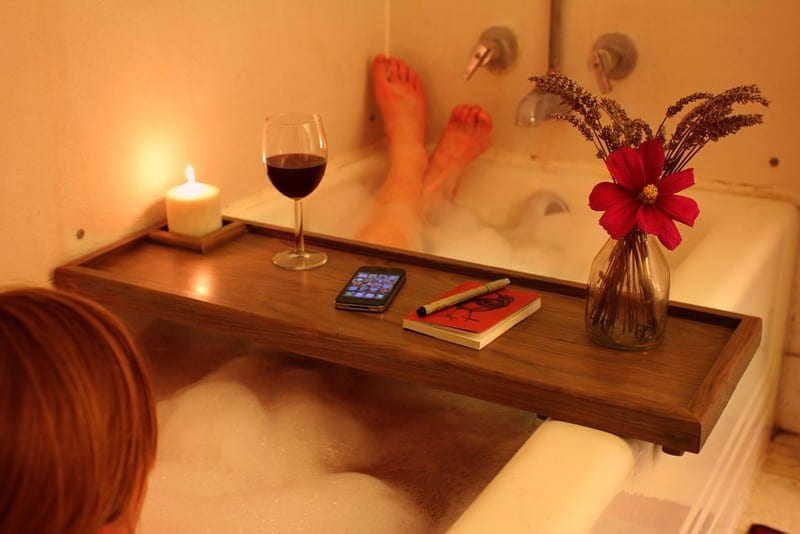
What could be more relaxing than a luxurious bath? Add a glass of wine and your favourite book, and you have the perfect way to unwind after a long day.

Relaxing in the bath is a great luxury, but some tend to be short on level space. No problem! You can have this DIY bathtub caddy!
This DIY bathtub caddy project will let you read, have a glass of wine, etc while soaking your troubles away!
Contents
Building a Bathtub Caddy
You’ll need these materials:
- Walnut Board
- MDF Board
- Wood Glue
And these tools:
- Jointer
- Planer
- Table Saw
- Miter Saw
- Palm Sander
- Biscuit Joiner
- Router with Round over bit
- 2 – Paint Brush
- Brad Nailer
Steps to make a DIY bathtub caddy project:
Start your DIY bathtub caddy project by joining the straighter/truer narrow edge. My jointer is a little underpowered, so we had to make sure to advance slowly and remove only small amounts of material with each pass.
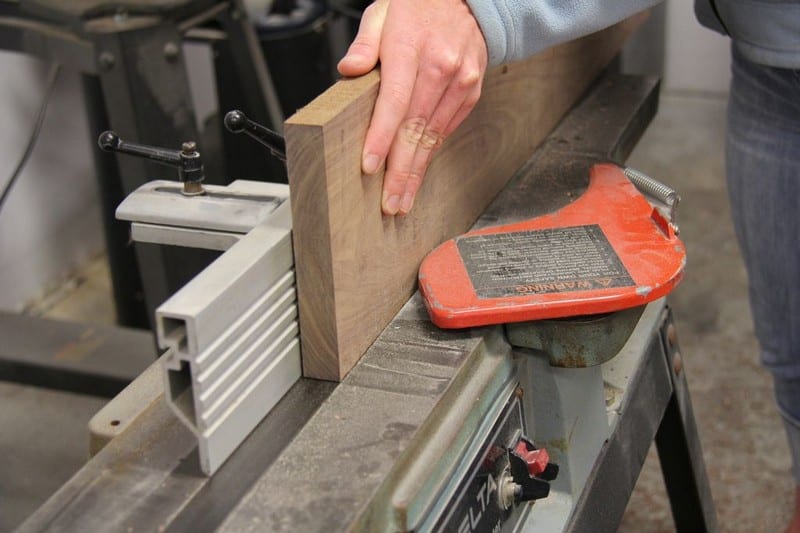
Place the jointed edge against the table saw fence and rip the board to width creating two parallel sides. We cut our board down to around 5 or 6″ wide.

This board was a little too wide for my old joiner to joint a face before planning, so we just went straight to the planer and planed both faces of the DIY bathtub caddy. It was planed at the mill and wasn’t in too bad a shape. Run it through, flip, and repeat. Comes out good enough for this casual DIY bathtub caddy project.

Trim the boards to the length of the chop saw. We cut the longboard down into two shorter sections that are going to be biscuit joined together to make the DIY bathtub caddy wider than the original board.
The length of the DIY bathtub caddy depends on your bathtub and should be sized to fit it precisely. Measure the tub and add a few extra inches if you want it to overhang the outer lip.
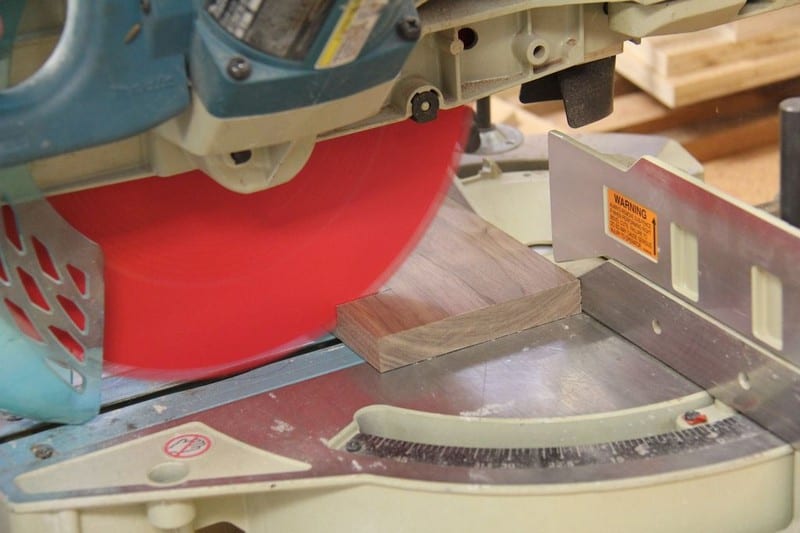
To join the two boards together we used a biscuit joiner. The biscuit joiner cuts slots in the side of the wood for glue and the wooden biscuits which hold the boards together permanently and precisely in place.
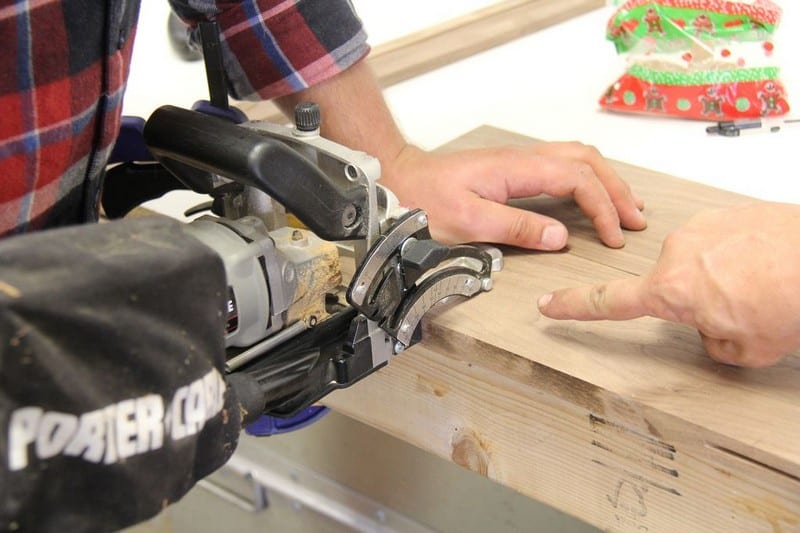
Brush some wood glue into the slots and onto the edges about to be joined. Fill the slots with wood biscuits, clamp the boards, and let the glue dry.
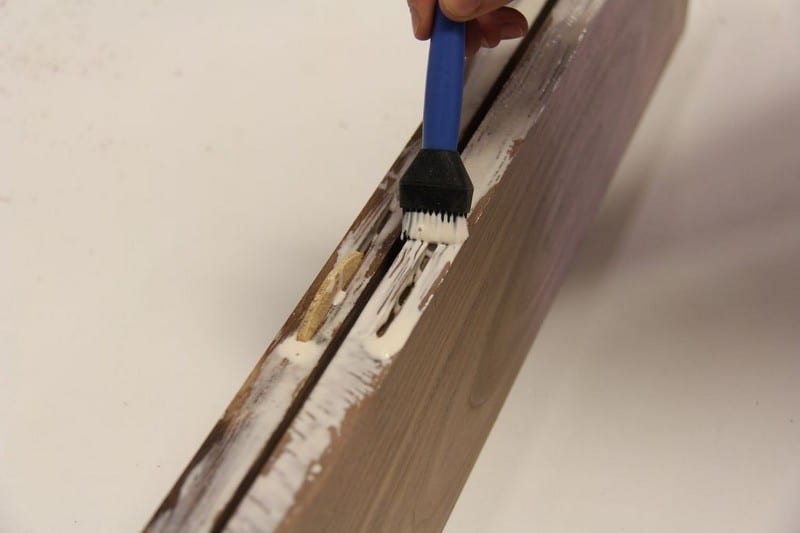
While the glue was drying we set off to make some simple walnut quarter-round moulding. Slice a 5/8″ x 5/8″ strip of walnut off of the remaining board from the lumber yard and run it through the router with a round-over bit.
Since the piece was small I used feather boards to hold it in place while I slid the stock through.
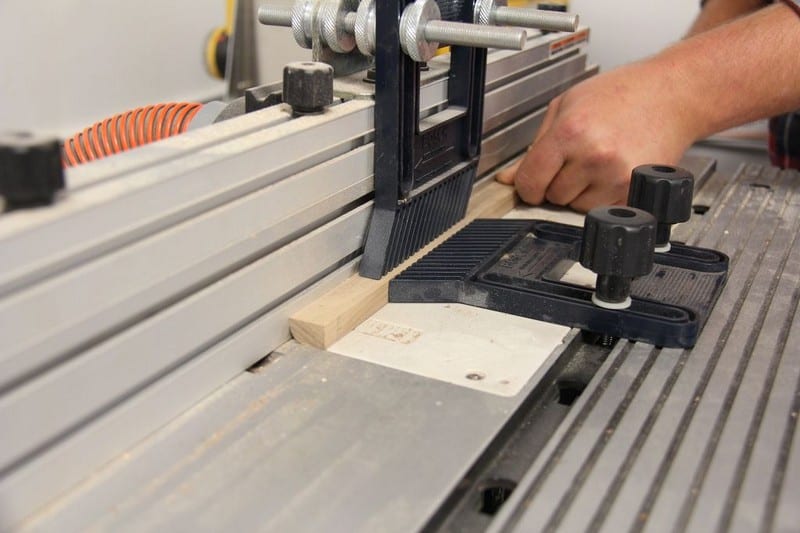
Mark the moulding length right on the mainboard for the tub caddy. We used a mitre saw and set the fence at 45 degrees to cut the mitres. A mitre box would also work just fine.
I used a scrap piece of MDF to create a zero-clearance fence to support the cuts to minimize tear-out.
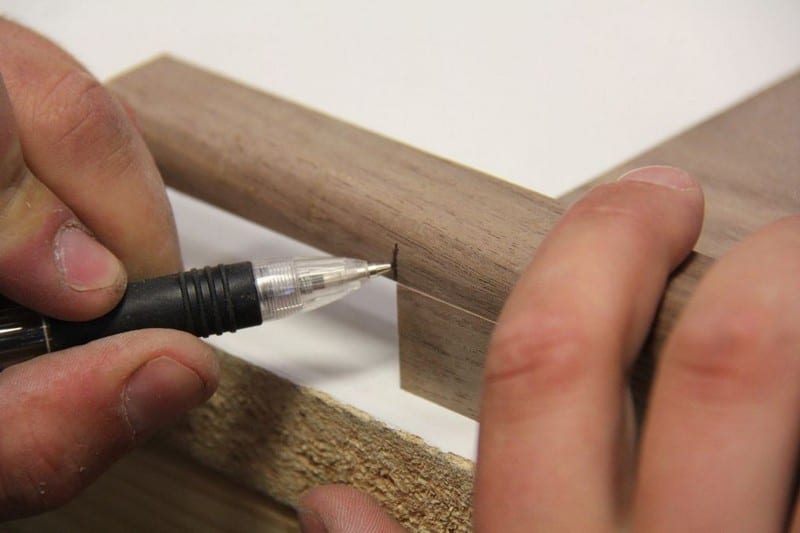
Cut the walnut quarter-round moulding to the proper lengths to create a border for the DIY bathtub caddy.
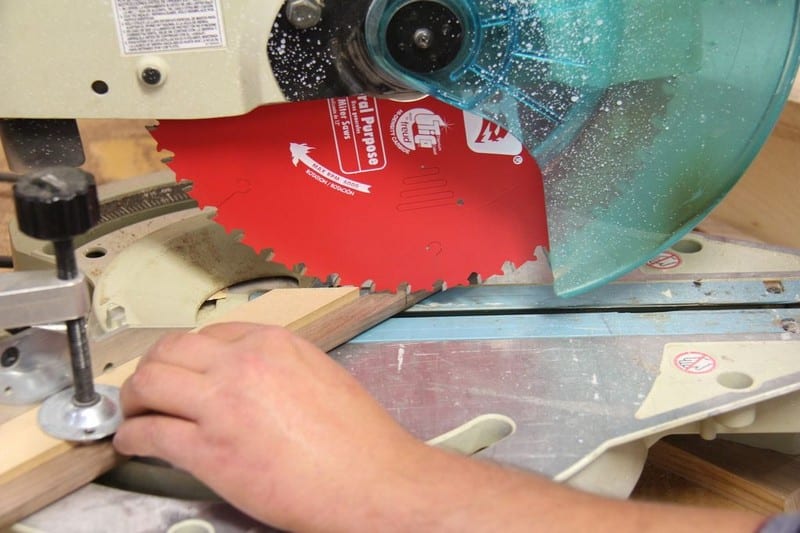
Fit the moulding place on top of the now dry mainboard for the caddy. If everything lines up apply some wood glue to the back of the moulding. Lay it down on top of the board and carefully line up the mitres. I used a brad nailer to shoot some brads in place while the glue dried.
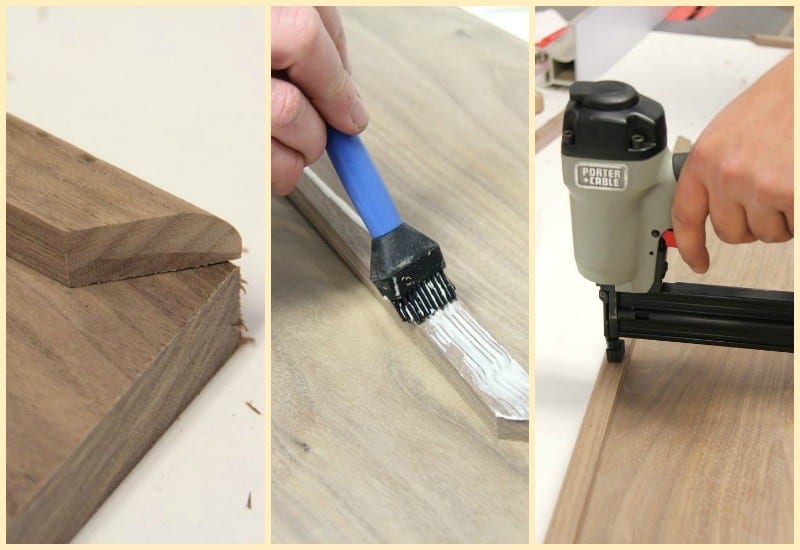
Once the outer moulding was on, we still had some extra walnut quarter-round material left. We decided to make a small box in the corner of the caddy to hold things like candle wax, a wine glass, or perhaps a flower vase in place. Cut two short sections of the quarter round with a single mitred end, position, glue, and finally brad nail the corner piece in place.
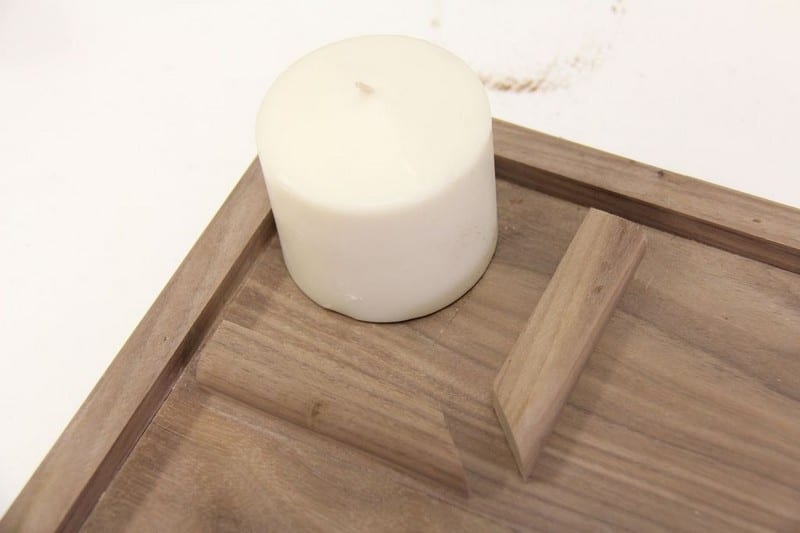
Sand the entire caddy with 120 and then 220 grit sandpaper. I used a random orbital sander, but it’s small enough to do it by hand. Some of the detail areas need to be hand sanded.
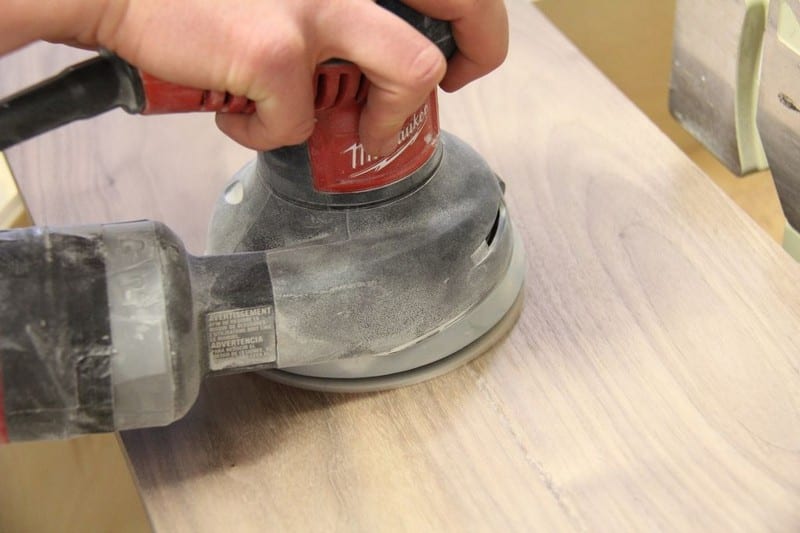
Some kind of basic system is necessary to hold the wood in place on the tub so it doesn’t slip around and fall in. We measured the interior width of our tub and installed a very simple cleat system that locks the caddy in place securely.
The process went something like this: measure from the wall to the interior left side of the tub. Measure the distance between the two sides of the tub, inside measurement. Finally, measure the width of the exterior tub wall on the right side. Mark these measurements onto the tub caddy and glue walnut cleats onto the bottom of the main board at these locations for a total of 3 cleats.
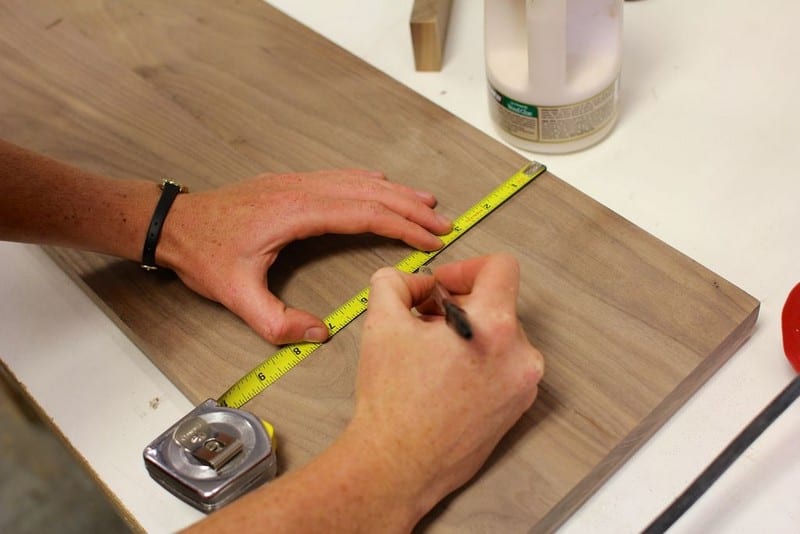
In theory, you only need the two right cleats which grab the exterior wall of the tub, however, the left cleat is nice because it locks everything in place tightly.
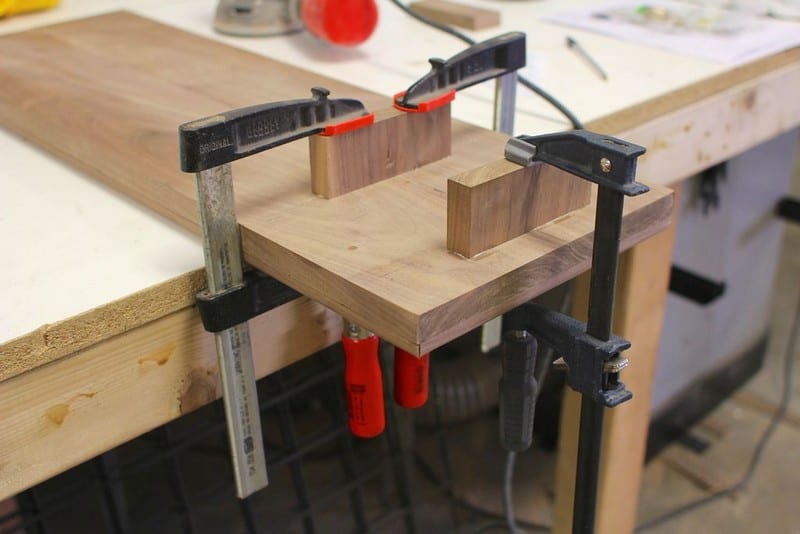
Since the walnut is going to be used in a watery environment, we sealed everything with two coats of a water-based spar varnish urethane from Varathane. It goes on a little milky but dries with a nice satin clear finish. Very easy stuff to work with.
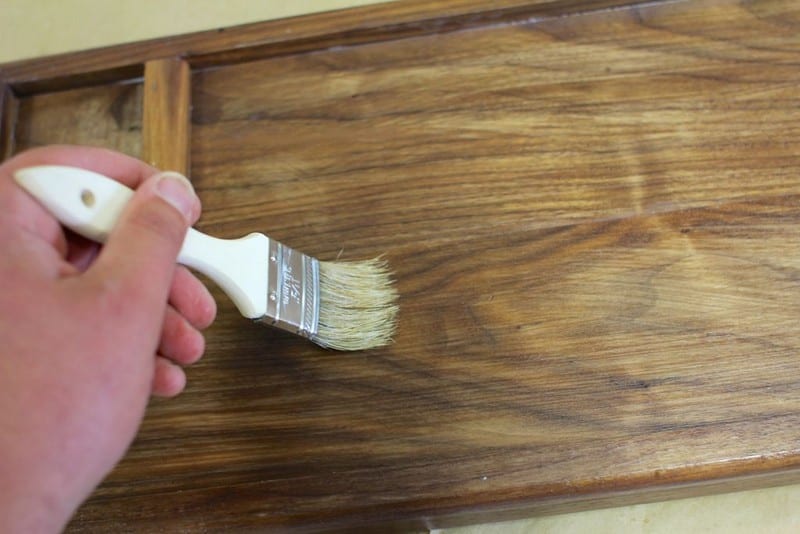
Once the varnish is dry the project is done!
Thanks to noahw for this great project.
Unique Features to Add to Your DIY Bathtub Caddy
A DIY bathtub caddy already brings comfort and convenience to your bath routine. But with a few thoughtful additions, it can go from a simple board across the tub to a personalized spa accessory. Whether you’re making one for yourself or as a gift, adding special features makes it more functional and enjoyable. Here are some creative ideas to inspire your next project.
Wine Glass Holder
A wine glass holder is a popular feature for bathtub caddies. It’s a simple notch or cut-out that securely holds the base of your wine glass, keeping it stable even if the caddy shifts slightly. You can make the cut-out using a jigsaw or hole saw and smooth the edges with sandpaper. This feature keeps your glass from tipping over and frees up space on the caddy for other items.
Book or Tablet Stand
For anyone who loves to read or watch shows while soaking, a built-in stand is a must. A simple ledge or groove cut into the caddy can hold a book upright. For tablets, you might want to add a back support that props the device at an angle. Make sure to add a lip at the bottom to keep pages or devices from sliding off. Consider adding a waterproof cover or using water-resistant wood for this feature.
Candle Holders
Candles set the mood for a relaxing bath. Carve out a small recess in the wood or attach a metal or glass candle holder to one end of the caddy. If you prefer safety, you can use LED candles. Either way, a designated space for candles keeps them from tipping into the water.
Phone Slot with Waterproof Cover
Phones often find their way into the bathroom, whether for music, podcasts, or calls. Adding a slot that holds your phone upright is handy, but consider including a clear waterproof cover. This protects the device from splashes while still allowing you to use the screen.
Soap Dish or Small Tray
A shallow dish carved into the wood or attached to the caddy is perfect for holding soap, bath bombs, or a loofah. You can also attach a small removable tray for flexibility. This keeps bath essentials within reach and off the side of the tub where they can slip into the water.
Towel Bar or Hook
Attach a small dowel or metal rod to the side or underside of the caddy to hang a washcloth or small towel. You can also add hooks for bath sponges or razors. This keeps everything organized and easily accessible.
Detachable Legs for Versatility
If you want to use your caddy beyond the bathtub, adding detachable legs can turn it into a serving tray or lap desk. Foldable or screw-in legs are both good options. This makes the caddy more versatile and practical for everyday use.
Non-Slip Grips or Cleats
To keep your caddy in place, consider adding non-slip pads on the underside. You can also install cleats that hook onto the edges of the tub, holding the caddy securely and preventing it from slipping into the water.
Adding these unique features can transform a simple DIY bathtub caddy into a luxurious, custom piece. It’s a project that enhances not only your bath time but your entire home spa experience.
Bathtub Caddy Gallery
Click on any image to start the lightbox display. Use your Esc key to close the lightbox.![]()
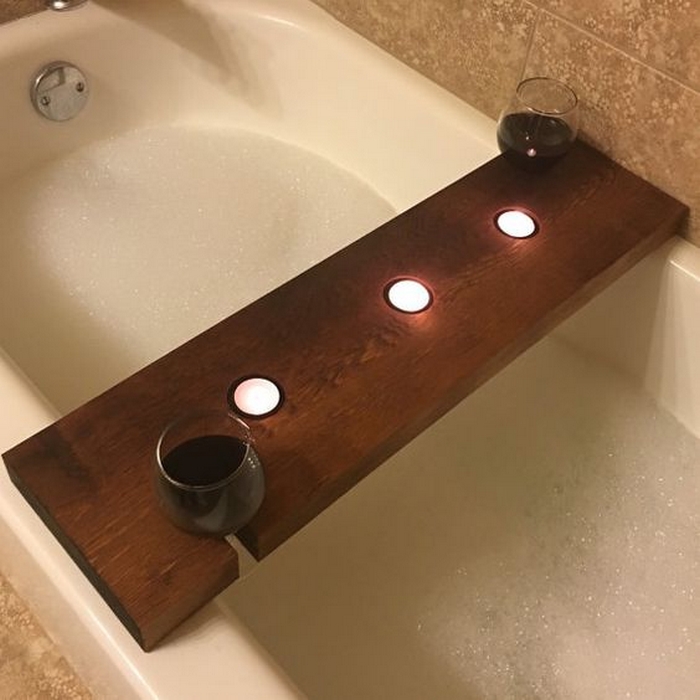
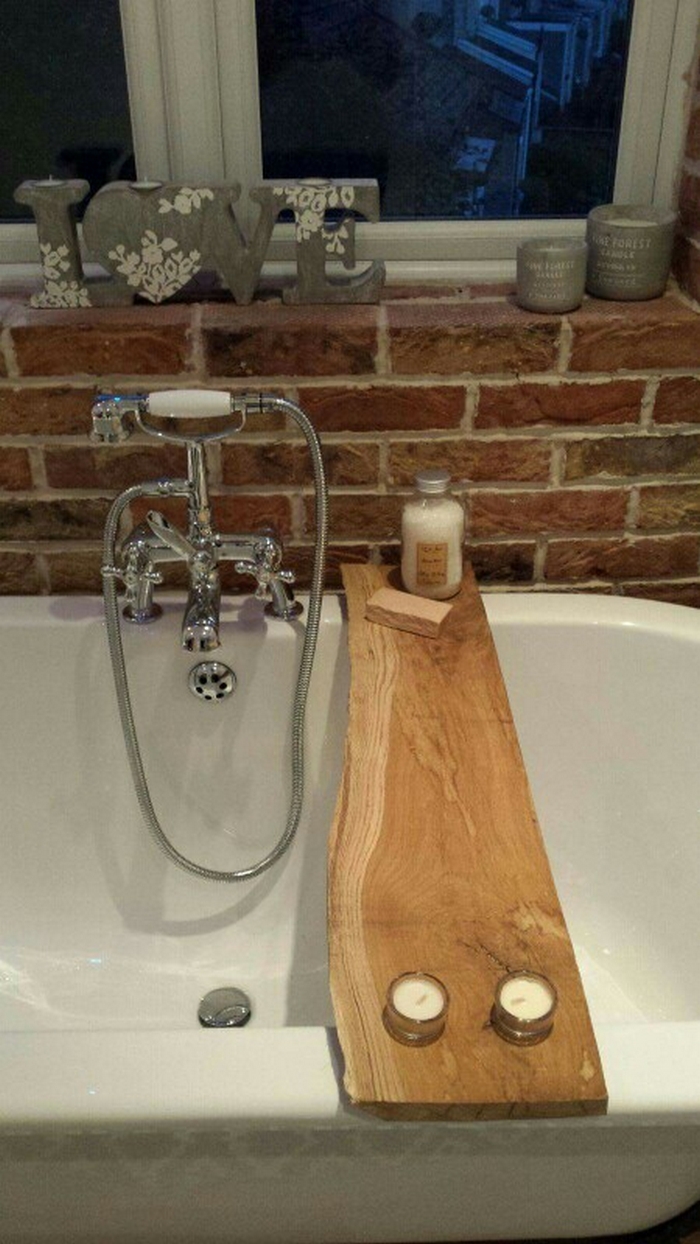
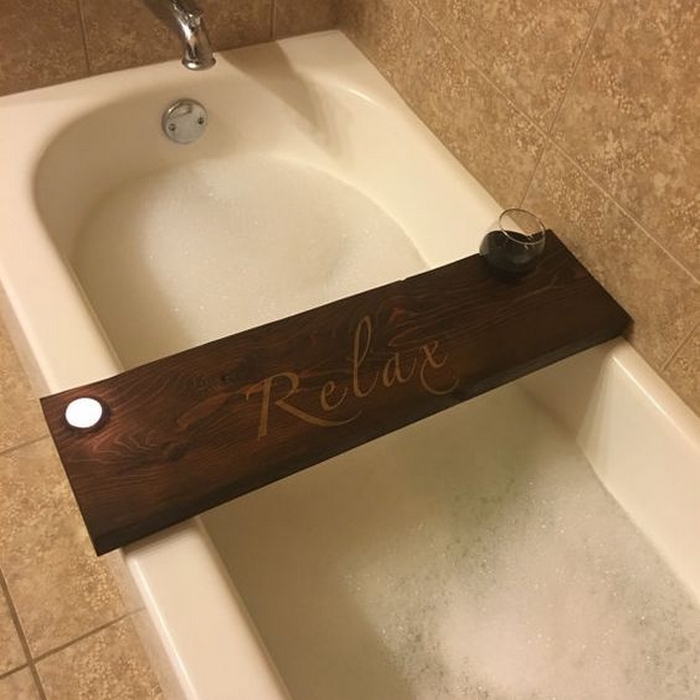
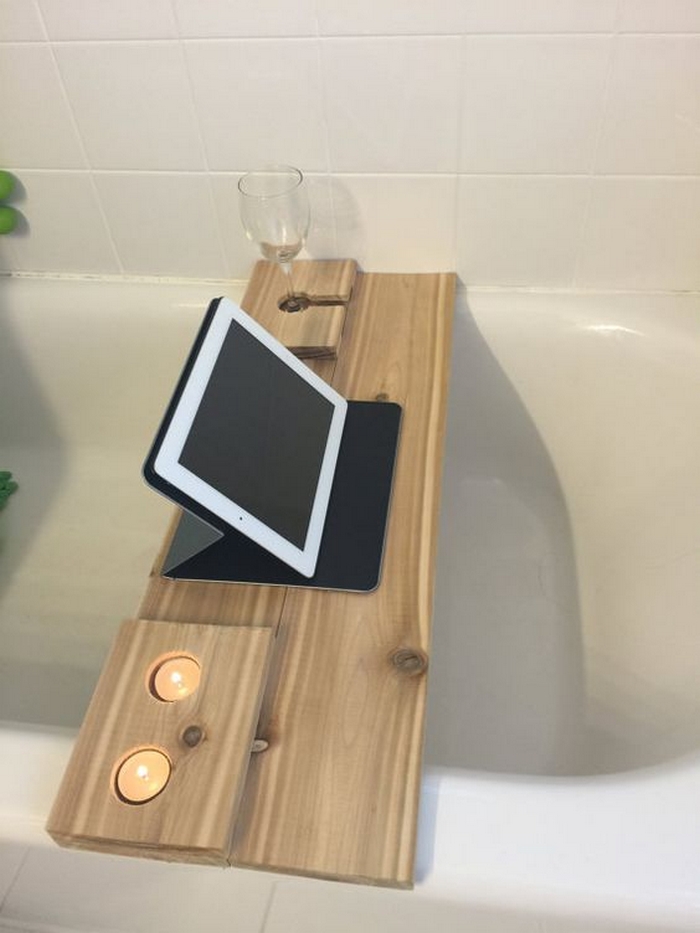

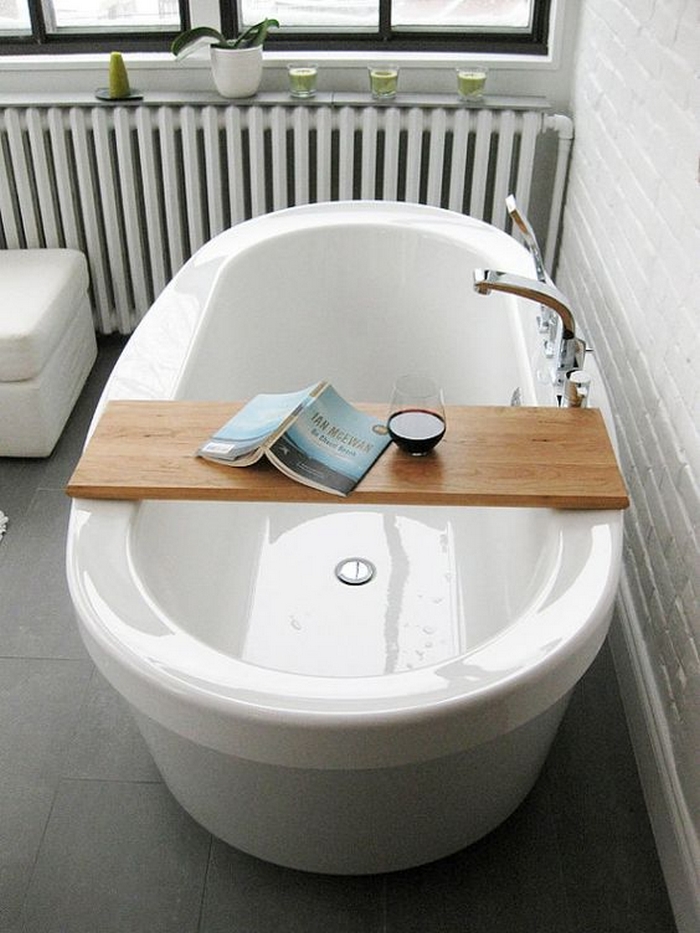
Waterproofing and Finishing Techniques for Long-Lasting Use
A well-made bathtub caddy should not only look good but also withstand constant exposure to water and humidity. Without proper waterproofing and finishing, even the best wood can warp, crack, or grow mold over time. Taking the time to seal and finish your bathtub caddy ensures it stays beautiful and functional for years.
Choosing the Right Finish for Your Bathtub Caddy
The first step in protecting your bathtub caddy is selecting the right finish. Water-resistant finishes like spar urethane, marine varnish, or tung oil are excellent choices. Spar urethane is especially popular because it’s designed for outdoor use and holds up well in moist conditions. Marine varnish offers a durable coating that can handle frequent water exposure. Tung oil penetrates deep into the wood, providing a natural finish that repels water, though it may require more frequent reapplication.
Sealing the Wood for Maximum Protection
Before applying any finish, make sure the wood is completely smooth and free of dust. Start by sanding the entire surface of the bathtub caddy with 120-grit sandpaper. Follow up with a finer grit, like 220, to create a silky-smooth finish.
Wipe away all dust with a tack cloth or damp rag. Apply the first coat of your chosen sealer with a clean brush, foam applicator, or cloth, depending on the product. Allow it to dry thoroughly. Lightly sand the surface again with fine-grit sandpaper to remove any raised grain. Repeat this process for at least two to three coats to build up a solid barrier against water.
Focusing on the Edges and Underside
The edges and underside of the bathtub caddy are often overlooked, but they are just as vulnerable to water damage as the top. Be sure to seal every surface of the caddy, including the bottom and any cleats or attachments. Water can seep into unsealed areas, causing swelling or mold. A thorough job ensures that water doesn’t have a chance to damage your hard work.
Using Non-Toxic and Safe Products
Since your bathtub caddy will be used in a space where skin contact is likely, it’s a good idea to choose non-toxic finishes. Look for water-based urethanes labeled safe for indoor use. These products have low odors, are easy to apply, and dry quickly. Tung oil is another safe choice, as it’s natural and food-safe once cured.
Maintenance Tips for a Lasting Finish
Even the best finish needs some upkeep. After each use, wipe down your bathtub caddy with a dry cloth to remove water droplets. Avoid leaving it in standing water for long periods. Every year or so, check the surface for wear. Lightly sand and apply a fresh coat of finish if the protective layer looks dull or worn. Regular maintenance will keep your bathtub caddy in top shape, extending its life and preserving its beauty.
Taking the time to waterproof and finish your bathtub caddy properly ensures it stands up to daily use. It’s a simple step that protects your project and lets you enjoy it for years to come.
Conclusion
Building a bathtub caddy is a rewarding DIY project that adds both function and style to your bath time. With the right materials and finish, it can last for years. Customize it to suit your needs and enjoy a relaxing, spa-like experience right at home.
We have more projects to enhance your bathroom. Check out our chalk paint flooring guide!






